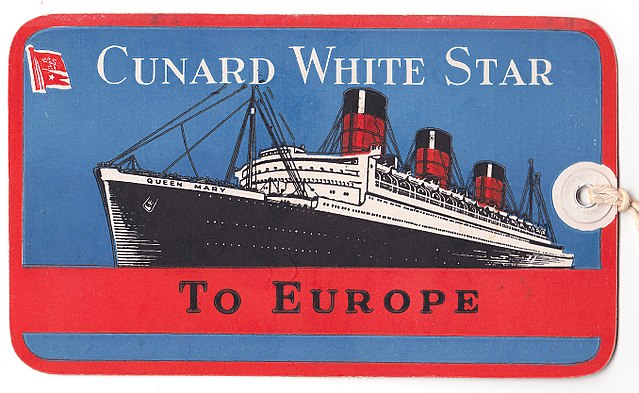RMS Queen Mary is a retired British ocean liner that sailed primarily on the North Atlantic Ocean from 1936 to 1967 for the Cunard Line and was built by John Brown & Company in Clydebank, Scotland. Queen Mary, along with RMS Queen Elizabeth, was built as part of Cunard's planned two-ship weekly express service between Southampton, Cherbourg and New York. The two ships were a British response to the express superliners built by German, Italian and French companies in the late 1920s and early 1930s.
Queen Mary at Long Beach, California, in 2010
Scale models of Queen Mary (foreground) and Queen Elizabeth (background) created by John Brown & Company, on display at the Glasgow Museum of Transport.
Queen Mary under construction at Clydebank, c. 1934
A Queen Mary baggage tag
An ocean liner is a type of passenger ship primarily used for transportation across seas or oceans. Ocean liners may also carry cargo or mail, and may sometimes be used for other purposes. Only one ocean liner remains in service today.
As of 2024[update], RMS Queen Mary 2 is the only ocean liner still in service
RMS Lusitania arriving in New York in 1907. As the primary means of trans-oceanic voyages for over a century, ocean liners were essential to the transportation needs of national governments, business firms, and the general public.
In 1838, Sirius was the first ship to cross the Atlantic using continuous steam power.
The first voyage of SS Great Western (1838)





![As of 2024[update], RMS Queen Mary 2 is the only ocean liner still in service](https://upload.wikimedia.org/wikipedia/commons/thumb/b/b3/Queen_Mary_2_Boston_July_2015_01_%28cropped%29.jpg/640px-Queen_Mary_2_Boston_July_2015_01_%28cropped%29.jpg)


